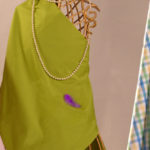Estonians buy approximately three new garments per month – considerably more than Latvians or Lithuanians. At the same time, consumption of new clothes has recently increased in all three Baltic countries. The question of what happens to cast-off clothes is a global issue, too, with questions being raised about the sustainability of “fast” fashion. Over the past 15 years, consumers around the world have increased the number of garments they buy, and they now keep these items for about half as long as they once did.
What happens to all these used clothes and textiles once they are discarded? And what should happen?
Researchers at SEI Tallinn, together with experts from Latvia (Green Liberty) and Lithuania (Textale), have been working for the past two years to answer these questions. The research project also involved the Danish consultancy PlanMiljø, which provided the expertise and experience of Nordic countries regarding textile circularity.
This video explains their findings, illustrating what happens to used clothes and textiles from Estonia, Latvia and Lithuania. The video explores the possibility for the reuse of these items and offers information about the next steps needed to create greater circularity in the industry.
The research results are shared by experts involved in the project: Kerli Kant (SEI Tallinn, Estonia/REVALUATE, Denmark), Kristiina Martin (SEI Tallinn, Estonia), Dace Akule (Green Liberty, Latvia) and Viktorija Nausėdė (Textale, Lithuania).
The research was commissioned by the Nordic Council of Ministers.
(Courtesy: Stockholm Environment Institute)





